Natulique Hair Color Ingredients Review
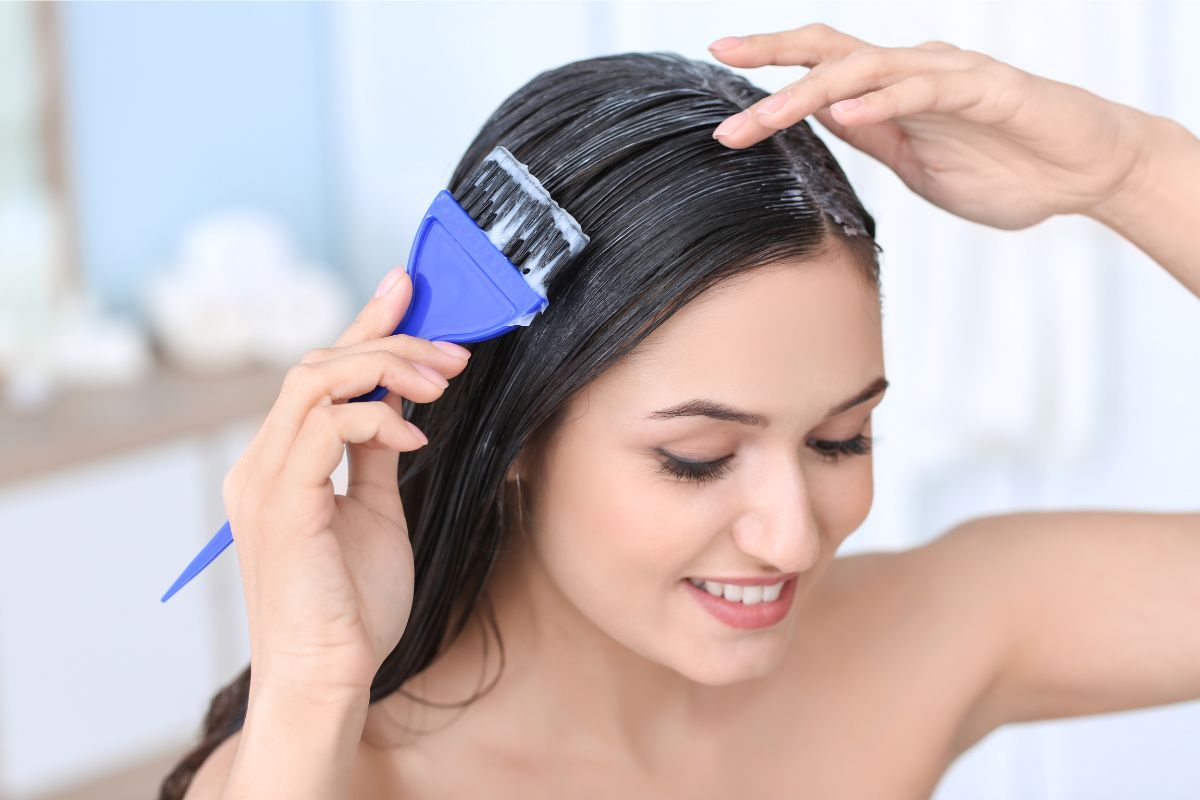
When choosing a permanent hair color, what criteria do you use? Understandably, such product descriptions as “natural hair color,” “professional hair color,” “100% grey coverage,” “natural ingredients,” and “certified organic ingredients” seem attractive, don’t they? However, neither these slogans, nor any amount of jojoba seed oil or any plant seed extract will compensate for the potentially toxic health effects of chemicals that permanent hair colors must contain to do the job of coloring. Therefore, no permanent hair color is safe for you in absolute terms, although some may be less harsh than others due to the ingredients used.
In this post, you will learn about Natulique hair dye ingredients, so you can make an informed decision about their safety. You will also find out what happened after I wrote my first blog post about Natulique hair color several years ago. Additionally, you’ll be able to see if Natulique professional hair colour ingredients, 98.02% of which are reportedly derived from “organic or natural sources,” truly make it different from other permanent hair color lines. You can find out which ones in particular in my Permanent Hair Color Rating List E-Book.
Natulique Hair Color Ingredients Review
In 2017, Natulique used to describe their hair color as “organic,” and their logo used to say “Natulique Certified Organic.” Personally, I found it rather misleading because one could assume that their products, including hair dyes, were certified organic.
With the help of my attorney husband, I discovered that both the “certifying agency” and the “organic standards” seemed to have been created by the company itself. In other words, they created their own “organic standard certification” (called “360BIOCERT”) and certified their own product to it.
Since I want consumers to make informed decisions based on the safety of ingredients, not advertisements, I wrote a post about Natulique professional hair colour. Their response sounded like they were planning to sue me. They said they had never claimed Natulique hair dye was organic. In fact, before contacting me, they had changed their logo to “Natulique Certified Organic Beauty.” Plus, they started describing their hair dye as “natural” hair colour instead of “organic.” Luckily, I had screenshots to prove my point.
On the one hand, it was an unpleasant situation because they threatened me with a lawsuit. But on the other hand, it was exciting because they read my post and made changes to their website! Besides, my attorney and I gathered the proof of my claims before we published the post (as we always do). Read on to find out how an “organic” permanent hair color differs from a non-organic permanent hair dye.
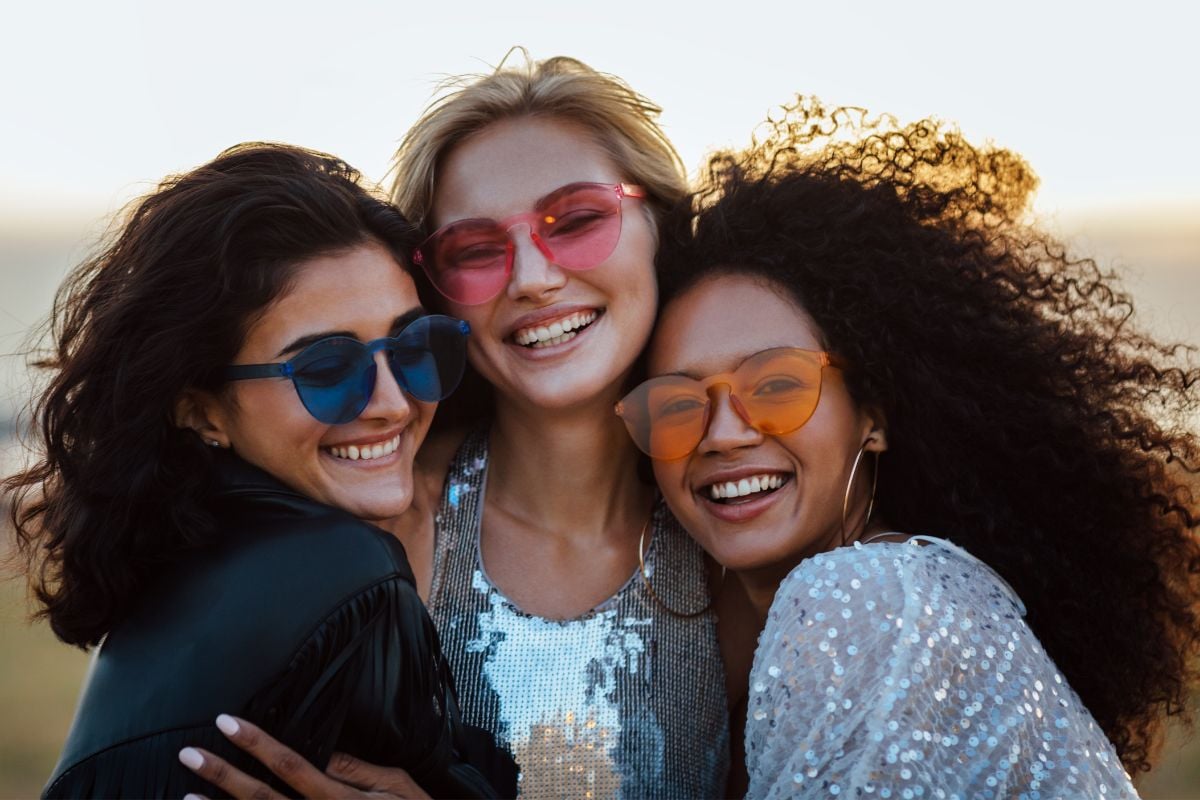
Does “Natural” Or “Organic” Permanent Hair Color Exist?
To start with, no permanent hair color can be organic. Period. And Natulique hair color is not an exception. Can it contain organic ingredients? Yes, it can. How many organic ingredients must it contain to be able to apply for a USDA organic certification? 95%. In other words, 95% of the product must be of agricultural origin, which is impossible for a permanent hair dye. Read more about that and some popular so-called “organic” hair dye brands in my post called Organic Hair Color: Buyer Beware!.
As of today, chemicals make a bigger portion of permanent coloring products, without which the product will simply not work. It is great that Natulique hair dye now openly admits to it by saying the following on their website:
We are not a 100% organic hair colour: We still use some chemicals to ensure lasting and covering results.
Keep reading to find out what chemicals Natulique “natural” hair colour contains.
Some companies claim their ingredients are “natural” or “naturally derived.” Let me give you some perspective on this claim.
First, the word “natural” is virtually meaningless when it comes to safety criteria. Indeed, lead, petroleum, and snake venom are natural, too, but it does not mean they are safe or good for you. Second, it is true that some substances can be “naturally derived.” That is, the manufacturer may start from natural ingredients. However, the derivation process involves a multi-step procedure with additional chemicals used along the way. In the end, the “naturally derived” product does not resemble much the original ingredient, in my opinion.
Are “Naturally Derived” Ingredients Safe?
Some hair color companies derive ingredients through a process called “ethoxylation.” One example is sodium laureth sulfate (NOT an ingredient in the Natulique hair color). When you understand the manufacturing process, “naturally derived” does not sound so healthy anymore.
Indeed, sodium laureth sulfate is “naturally derived” from healthy coconut oil. Then, during the derivation process, the coconut oil is turned into fatty acids used to derive lauryl alcohol. Next, lauryl alcohol is treated with sulfur trioxide gas or chlorosulfuric acid to produce sodium lauryl sulfate. Finally, sodium lauryl sulfate (SLS) is treated with carcinogenic ethylene oxide to make sodium laureth sulfate (SLES). This process forms carcinogenic 1,4-dioxane and is called “ethoxylation.” Traces of 1,4-dioxane can contaminate the final product unless it is properly removed with the vacuum stripping method. Does it still sound wholesome and healthy?
Thus, it is important to understand the derivation process of an ingredient to know what byproducts it may have. The problem is that you will not see these byproducts, or contaminants, on the list of ingredients. Moreover, it is not that common for hair color manufacturers to disclose their ingredients. In fact, I feel like I have to walk through thick and thin to pull the ingredient information out of them. Therefore, I appreciate the fact that, unlike some other hair colors (e.g., Oway Hair Color), Natulique hair dye discloses its ingredients on the website.
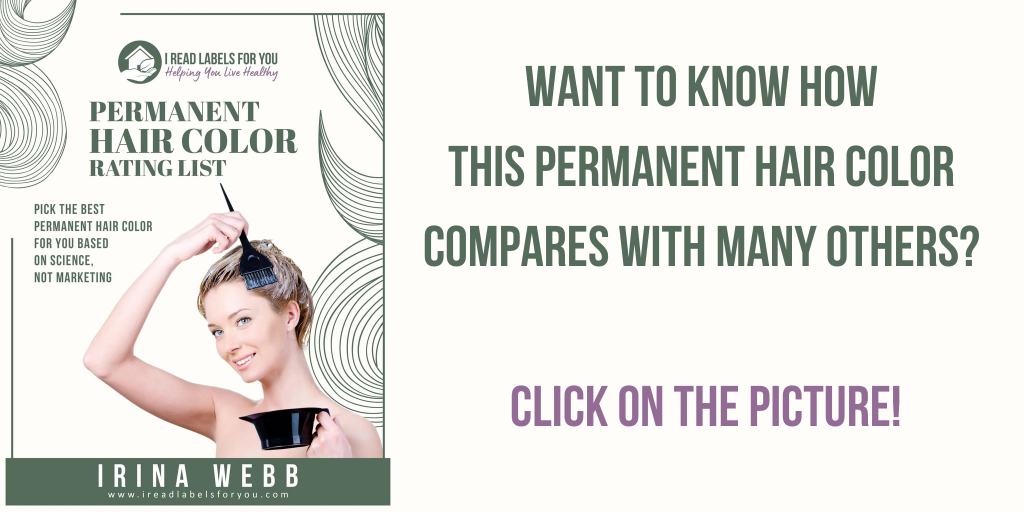
Natulique Professional Hair Colour Ingredients
As of September 2023, the ingredient list of Natulique permanent hair color is as follows:
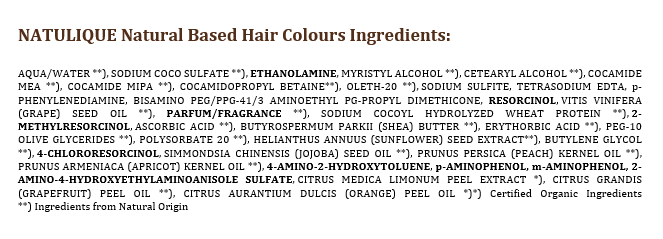
In the previous section, we discussed the process of ethoxylation, which is used to make ingredients for a plethora of products. Normally, you can spot ethoxylated ingredients by such words as: PEG, PPG, Polysorbate, and the ending “-eth.” As you can see, Natulique “natural” hair colour has some ethoxylated ingredients, too, namely:
- Oleth-20
- Bisamino PEG/PPG-41/3 Aminoethyl PG-Propyl Dimethicone
- PEG-10 Olive Glycerides, and
- Polysorbate 20.
According to the footnote at the bottom of the ingredient list, most of them originated from “natural” ingredients. Yet, by the end of their manufacturing process, they had been transformed into potentially harmful chemicals that may contain residues of carcinogenic 1,4-dioxane.
In addition to the ethoxylated ingredients, there are some other controversial ingredients, such as:
- ethanolamine
- colorants
- fragrance
- cocamidopropyl betaine, and
- cocamide MEA.
Even the presence of some natural ingredients (jojoba oil, sunflower seed extract, apricot and peach kernel oils) and a couple of certified organic ingredients (limonum peel extract and orange peel oil) cannot disguise potential concerns these ingredients have. Read on to learn more!

Ethanolamine In Natulique “Natural” Hair Colour
To start with, ethanolamine functions as a hair cuticle opener. Its role is to open the hair cuticle to let the color in. That is to say, it is a necessary component of a permanent hair color. Unlike many other hair colors that use ammonia for this purpose, Natulique hair color uses ethanolamine.
The production process of ethanolamine involves a reaction between a mole of carcinogenic ethylene oxide and a mole of ammonia. Hence, it has an ammonia-like odor (source).
According to the FDA, ethanolamine may also be contaminated with diethanolamine (DEA), which is linked with cancer in lab animals.
Doing research for my Permanent Hair Color Rating List, I discovered that there is limited evidence that ethanolamine is a teratogen in animals. (Teratogens are agents that interfere with fetus development.) The New Jersey Department of Health states that “until further research has been done, it should be treated as a possible teratogen in humans” (source). (Pregnant women will also benefit from my Helpful List Of Chemicals To Avoid During Pregnancy.)
Further, this study found that there was more hair damage from ethanolamine than from ammonia. In some extreme cases, the damage was as much as 85% more. Read my post about ammonia-free hair color brands to find out if they are really better.
Colorants In Natulique Professional Hair Colour
To begin, I consider colorants, or “dyes,” to be the main ingredients in a hair color because they do the actual job of color change and grey coverage. In other words, without them, a permanent hair color cannot exist. They may also cause skin sensitization, an allergic reaction that can happen after repeated uses of the same product.
When the European Scientific Committee on Consumer Safety (SCCS) assessed common hair dyes for skin sensitization potency, they assigned “extreme,” “strong,” and “moderate” sensitization potency to them. The colorants used in Natulique hair dye belong in the following categories
| Extreme | p-phenylenediamine (PPD) |
| Strong | p-aminophenol, m-aminophenol, 4-amino-2-hydroxytoluene |
| Moderate | 2-methylresorcinol, 4-chlororesorcinol, resorcinol (changed from “strong” in 2020) |
| A possible sensitizing potential cannot be excluded | 2-amino-4-hydroxyethylaminoanisole sulfate |
So, four out of eight hair dyes in the Natulique hair color are strong or extreme sensitizers. The SCCS concluded as follows:
Hair dye substances which fulfill the criteria for classification as R43 may not be safe for consumers. This is particularly so for hair dye substances categorized as extreme and strong sensitizers.
(source)
Now, I do not personally know of anyone who has had an allergic reaction to Natulique professional hair colour. Neither am I saying that you will have an allergic reaction to this or any other hair dye. Nevertheless, some of my blog readers shared that they had suffered an allergic reaction after using some hair dye. Also, this case describes an allergic reaction to a hair dye ingredient that resulted in 90% hair loss. And yes, one of the consequences of an allergic reaction can be hair loss. For other possible causes of hair loss, turn to my blog post The Most Overlooked Hair Loss Causes.

Fragrance And Cocamidopropyl Betaine
In my Permanent Hair Color Rating List E-Book, I rate fragrance 8 out of 10 (with 10 as “most toxic”). This is because fragrance is a mixture of multiple ingredients, many of which are known allergens. That is why I prefer fragrance-free products. And the “natural” fragrance is not much better, even when it comes from essential oils. Read my post about natural fragrance to learn the difference between natural fragrance oils and essential oils.
Another controversial ingredient in Natulique hair color is a surfactant called “cocamidopropyl betaine.” Suffice it to say that the American Society of Contact Dermatitis lists it as an allergen and even named it “Allergen of the Year” in 2004 (source). A common substitute for cocamidopropyl betaine, especially in “natural” shampoos, is cocamidopropyl hydroxysultaine. Also, oftentimes, cocamidopropyl betaine is confused with coco betaine. You can find a comparative analysis of these three ingredients in my post about the safety of cocamidopropyl hydroxysultaine.
Finally, I want to talk a little bit about cocamide MEA because of its notorious relative cocamide DEA.

Cocamide MEA Vs Cocamide DEA
First, cocamide diethanolamine (DEA) is considered a “naturally derived” surfactant because of its source ingredient – coconut oil. How come then the state of California classified cocamide DEA as a carcinogen in 2012? (source)
As we’ve discussed above, the manufacturing process of an ingredient consists of multiple steps and involves addition of chemicals. At the end of the process, the new ingredient has nothing in common with its original source (in this case – coconut oil).
Indeed, cocamide DEA is a derivative of diethanolamine (DEA) and may contain DEA as a contaminant. The International Agency for Research on Cancer (IARC) evaluates DEA as “possibly carcinogenic to humans” (IARC carcinogenicity Group 2B) (source).
Further, both the European Union and Canada Health prohibit DEA in cosmetic and personal care products. However, the EU allows derivatives of DEA (the “fatty acid dialkylamides and dialkanolamides” group), including cocamide DEA, with restrictions to minimize the possibility of carcinogenic contaminants. One of the restrictions is for them not to be used with nitrosating ingredients.
Likewise, the US Cosmetic Ingredient Review (CIR) Expert Panel expresses a concern that diethanolamine (DEA) contaminant in cocamide DEA can be converted (“nitrosated”) into N-nitrosamines that may be carcinogenic. Consequently, they do not recommend using cocamide DEA in cosmetic products that can potentially form N-nitroso compounds.
Fortunately, Natulique hair dye does not contain cocamide DEA. But it contains cocamide MEA. Let us see if it is a safer option for Natulique hair color.
Cocamide MEA May Be Safer Than Cocamide DEA, But It Is Not Ideal.
To begin, cocamide monoethanolamine (MEA) belongs to the group of ethanolamides and is a mixture of ethanolamines of fatty acids derived from coconut oil.
Unlike DEA that breaks down readily in a product and forms N-nitrosodiethanolamine, a known animal carcinogen, MEA does not form a stable nitrosamine. Therefore, cocamide MEA is not considered a carcinogen. Further, in clinical tests, cocamide MEA even at concentrations of 50% was not irritating in a single-insult patch test. Alternatively, cocamide DEA caused irritation at concentrations as low as 2%.
There is a concern, though, that cocamide MEA may contain small amounts of cocamide DEA. Therefore, the CIR panel warns manufacturers not to use cocamide MEA in body or hair products containing nitrosating agents. It is because they can provoke the formation of a stable nitrosamine.
Unfortunately, the CIR panel does not specify what those nitrosating agents are. Over the years, I have looked into that and still do not have a complete list of them. It seems that testing a product is the only way to ascertain whether it has carcinogenic nitrosamines.
In sum, I believe that while cocamide MEA is safer than cocamide DEA, it is far from ideal.
Conclusion About Natulique Hair Color
Some Ingredients In Natulique “Natural” Hair Colour That May Increase Health Risks Are Ethanolamine And PPD.
I wholeheartedly believe that together we can demand and receive safer consumer products! In my career, I have already seen many positive changes. Thus, Natulique hair dye does not claim to be organic anymore. Plus, they disclose their ingredients on the website, which is not very common for professional hair colour lines. Though small, these changes are steps towards collective awareness of the risks coming from using hair dyes. So please, ask questions and knock on doors.
As for Natulique hair color, I cannot declare it “safe.” One of the reasons is that it contains ethanolamine and extreme, strong, and moderate sensitizers. However, no permanent hair color is safe in the first place, in my opinion. I have seen the ingredients of dozens of permanent hair color lines and, in my opinion, none of them were safe (in absolute terms) because they all contained sensitizers. On the other hand, some hair dyes or shades are somewhat safer than others due to the absence of extreme or strong sensitizers. Therefore, always check the ingredients of your shade!
In my Permanent Hair Color Rating list E-Book, Natulique professional hair colour takes roughly a middle position in comparison to other permanent hair colors. I think there are safer permanent hair colors, and they do not even claim to be organic or natural. In the e-book, you can also find my suggestions on how to protect your hair and health.
Lastly, browse the I Read Labels For You blog, check out my shop for healthy products of all kinds. And book a consultation with me if you need immediate clarity in your healthy and non-toxic journey.

Download The Free Guide!
5 Powerful Steps To A Non-Toxic Home
Join our informed consumer community and get our free guide the “5 Powerful Steps To A Non-Toxic Home”.

 Written by
Written by  Health-related claims have been reviewed by
Health-related claims have been reviewed by 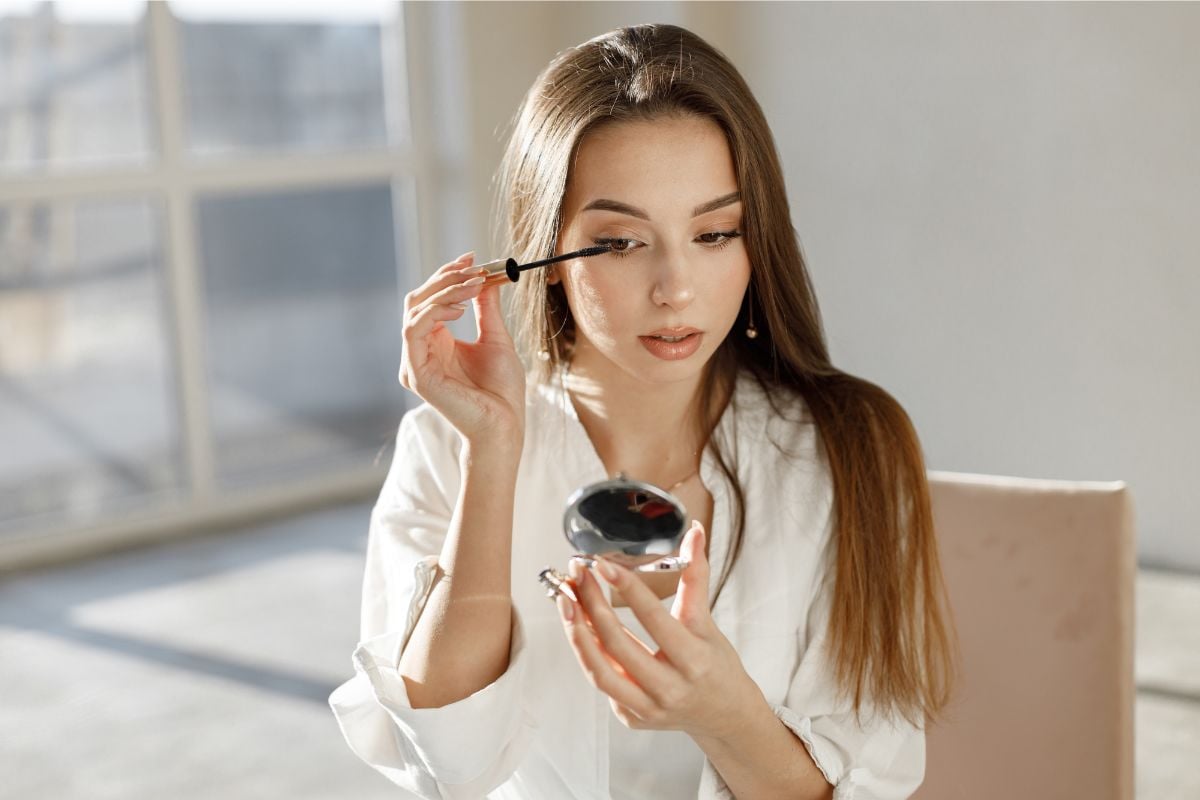
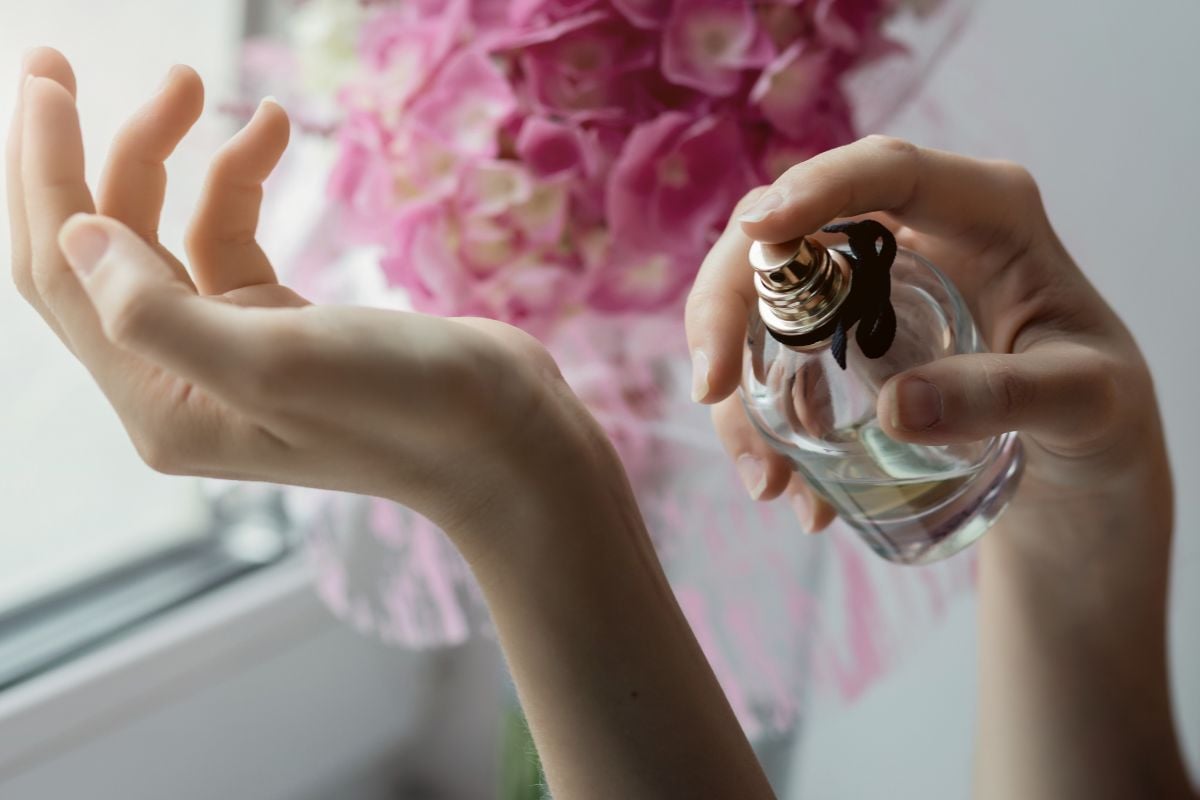
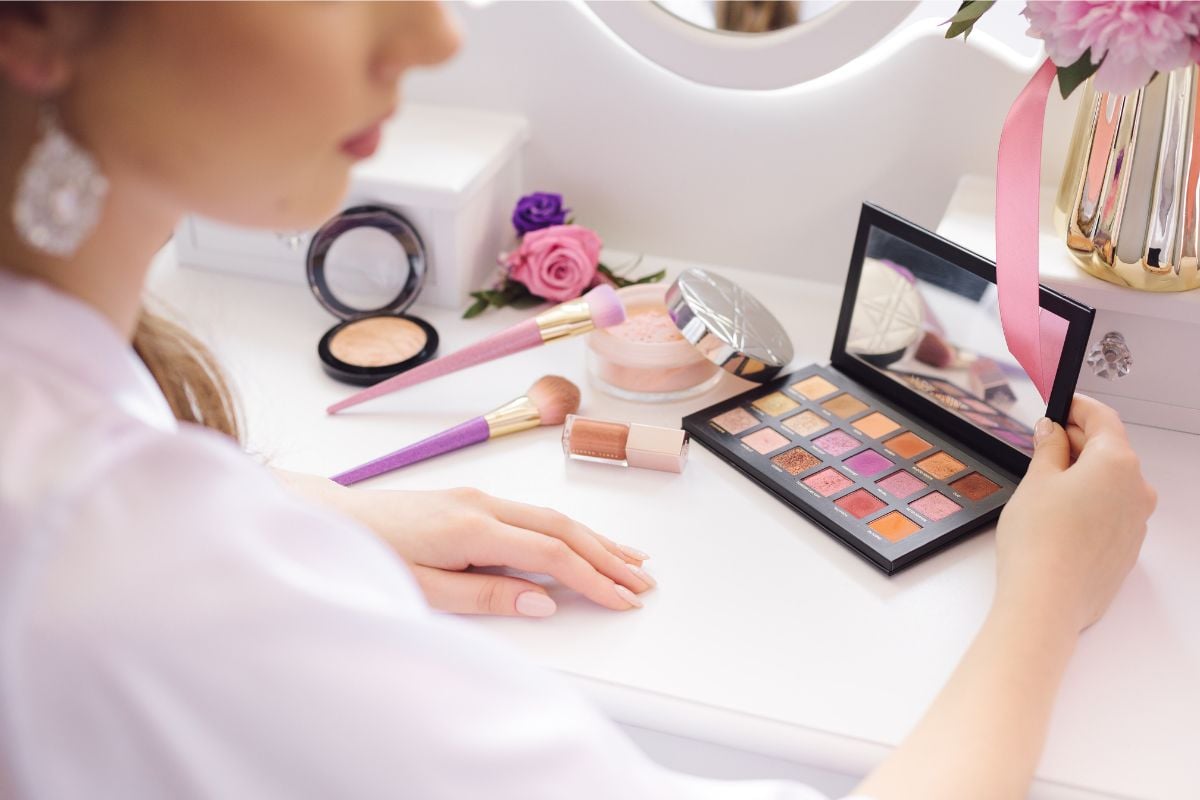
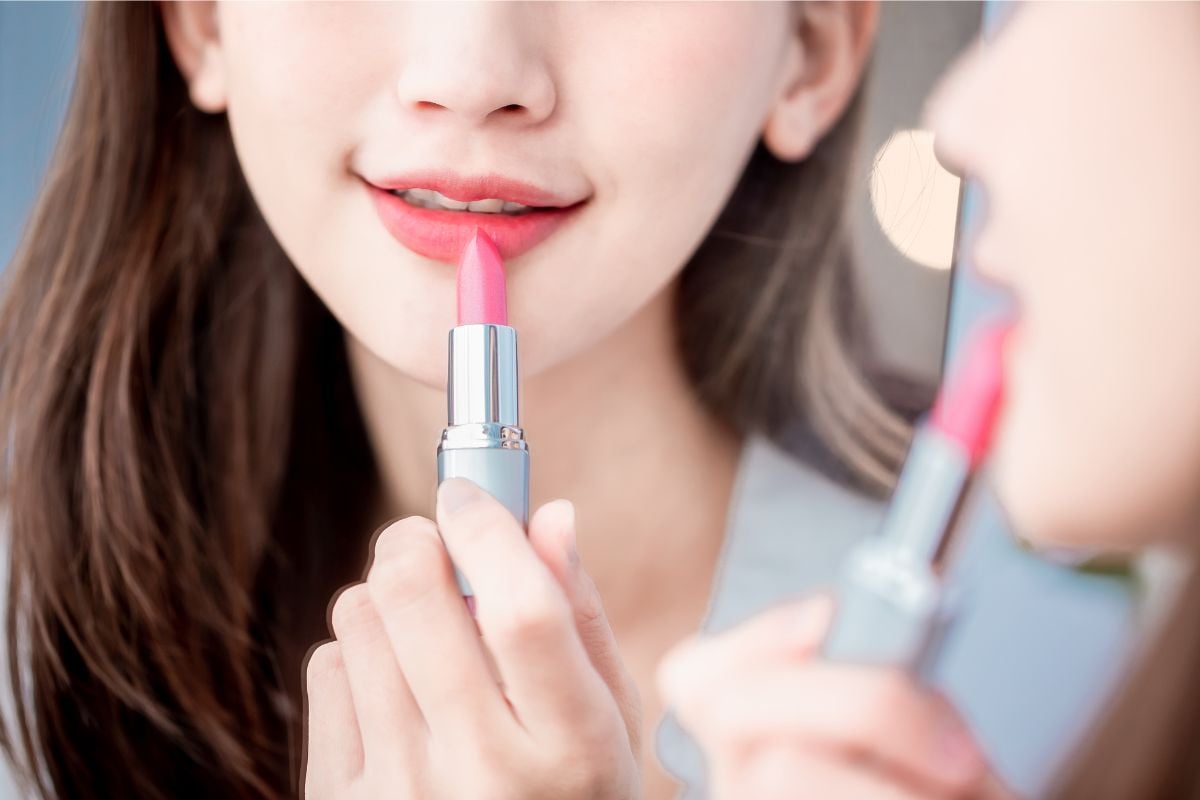

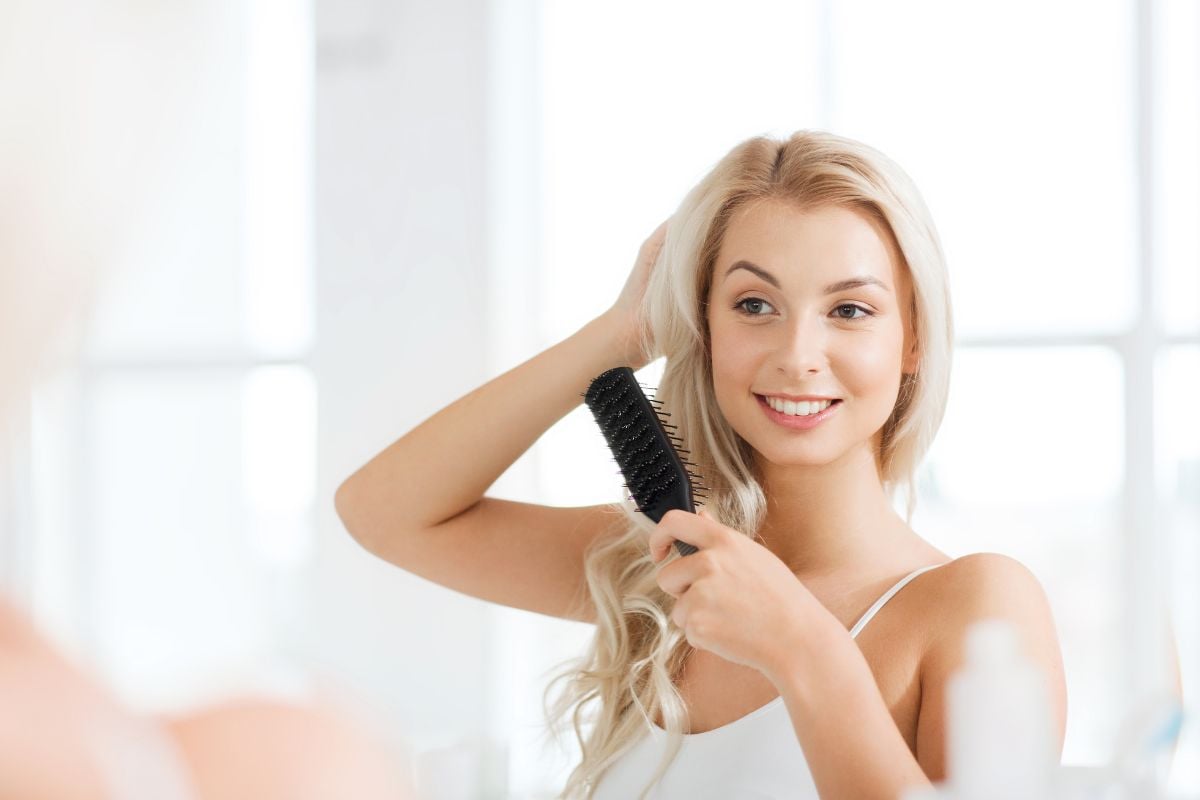
I am so grateful to you. I purchased your list and descriptions of hair dyes that you had at the time about two years ago .I figured out I was having reactions to hair dye. I had been using Aveda salons for a few years believing it was a clean product line. My stylist, who owns the salon, agreed to use the product I chose from your suggested company products for coloring my hair and I have not had a problem with scalp itch since the switch. I just wanted to say thank you again for giving me the ability to continue coloring my hair.
Hi Janis,
Thank you for your kind feedback! We really appreciate it!
We are happy we could help.
This is bittersweet news! I’m a hairdresser and have been using Natulique for 6 years now! It was sold to me as less toxic than other hair color lines, 98% organic and 98% naturally derived. I was told the standards in Denmark are higher than our own USDA. The product is made in Denmark so I’m not sure why that is not mentioned in your article. Because of that, USDA guidelines do not apply. It has only been in North America for about 10 years since it’s beginning in 1998.
Natulique claims Denmark trademark certifications: 360 Biocert Natural, 360 Biocert Organic, which I think only means that those natural and organic ingredients have been recycled at least once. Total greenwashing marketing! The new buzzword I see being used is “sustainable.” It seems Natulique has joined the marketing bandwagon becoming more concerned with the planet (which is equally a scam) than our health.
I am pretty sure I am becoming allergic to Natulique hair color. I have been using it for a little under a year now. I think I need to quit doing hair all together. I am thankful for you.
Hi Irina,
I’m so glad I’ve stumbled upon your blog!
I’ve been using Natulique Medium Blonde for a while now because it was recommended to me by my favorite hair dresser who I trust. In Germany Natulique products can only be distributed by so called natural hair dressers who claim to work with “natural” hair coloring products.
I must admit I really loved and love the coloring result of Natulique but at the same time I have also developed an allergic reaction, sort of dry, dandruffy and sometimes itchy rash on my scalp so I’m switching to a truly natural product from Logona.
I checked the products in the app “Codecheck” and was shocked.
I tried to talk to my hairdresser about it but she said, that none of her clients has had any problems and if I want the color to work I have to use chemicals……. I was quite shocked cause the color is marketed as a natural product and is quite pricy…
Before that I was using Culumnatura products, that I can highly recommend but because I travel a lot I needed a cream color for easier application.
Anyways, I’ll see if the cream coloration from Logona works even without chemicals, fingers crossed. if not I’ll make sure to check out your list of recommended products :))
Hi, Anna! Thank you for sharing!! We are sorry to hear about your allergic reaction to your hair color, but it is good that you figured out the cause. It would be great if hair colors that are promoted as natural were really natural! Your hairdresser is right, though: for a permanent hair color to work it must contain chemicals. And it is only a permanent hair color that can alter a hair shade dramatically and make it last. So, our Permanent Hair Color Rating List e-book gives rating to permanent hair colors in terms of safety. Neither of them is absolutely safe, because all of them contain some kinds of chemicals. The only natural hair coloring products without chemicals we have come across are plant-based, such as henna. We hope you will find a safe hair color that will work for you!
Hello Irina;
I have an extremely sensitive scalp. I’ve tried a few men’s hair color products and they all seem to cause irritation. After reading your investigation on NATULIQUE I decided against it. Do you have any recommendations on permanent or semi-permanent hair coloring products that I might consider?
Thank you, Keith
Hi, Keith: you might want to download and read my ebook about that: https://ireadlabelsforyou.com/ebooks/permanent-hair-color/ ~Irina
Hi Irina,
I had breast cancer nine months ago. Went thru chemo, radiation and now take hormone therapy. My hair fell out, grew back white. I want to change color, but am afraid to. Is a semi permanent dye better to use then permanent? I bought surya brasil, semi permanent dye, but am afraid to use it.
Any suggestions? I need help and would appreciate it. Thanks!!!!
Pat
Hi, Patricia: So sorry you have to go through this challenge. Feel free to book a consultation with me so we can make the safest haircare plan that works for you. https://ireadlabelsforyou.com/services/consulting/ ~Irina
Hi, Not disagreeing with anything you’ve said here, I think Natulique’s marketing tactics have been very questionable and have been watching aghast! BUT I’ve loved using the product for the last 5 years in my business, my own irritated skin on my hands cleared up instantly, and many of my clients can use natulique, where they can’t use other products.
I just wanted to let you know that I disagree with the comment about it smelling like ammonia, I’m not going to argue with the facts as I’m not scientist lol, but it definitely doesn’t smell like anything much at all, and now days I can’t be around traditional hair colours. I enjoy working with it as do many of my clients
Just wanted to share that.
Hi Irina
I m not sure if you can help me but maybe you can point me in the right direction.
I have a really bad hair dye allergy. I ve only ever dyed my hair twice which resulted in a rash all over my scalp the first time and a rash all over my scalp and swelling of most of my face and this was an ammonia free hair dye. Since then (15 years ago) the doctor told me to always test products on the inner side of my elbow for 48 hours which I have done with endless hair dyes over the years. I put a drop for 5 mins and wash it off and within 12-24 hours, the inner side of the elbow swells up, turns red and oozes stuff out whilst I feel my arm is on fire and it looks like I ve burnt my arm for the next 2 -3 weeks until it heals. My arm also swells up and sometimes have to go into hospital to be put on 2 antihistamine drips to feel a little better. I ve done an allergy test and I have a slight allergic to nickel and ppd, but nothing that’s ever bothered me from any other ppd products I ve used. Do you know of any detailed test for hair dye that I can do? Or any hair dye you recommend. Ideally I want my original hair colour which is dark brown. Appreciate your help in advance.
Mirei
Hi, Mirei: have you gone to only one dermatologist? You might want to look for a second opinion and specifically look for a dermatologist who is knowledgeable about hair dyes. Also, if you purchase my Permanent Hair Color Rating List ebook and read it, you will know everything you need to know to make an informed decision about your options. https://ireadlabelsforyou.com/ebooks/permanent-hair-color/ ~Irina
I had been using Wella level 6 at the salon for about fifteen years without issue. Two years ago, I started to get the itchy scalp. My hairdresser added sugar/sweetener packets and the itching stopped. Within six months, I developed a hard bumpy colorless rash around the back of my hairline and a few similar hard bumps between my eyebrows and side hairline. A few more months and I got the same rash down my spine near my waistline. It is now two years and numerous dermatology visits have not pinpointed anything. I know the brown and black colors seem to have the biggest issue. Since I am about 90% grey; we started lightening the color slowly and am currently in the lighter shade of level 7. I get color every three weeks. I am curious to know if your Wella testing was a specific level or numerous levels? Would you provide that information to me? I have your book and 2020 listings so I am going to test Goldwell.
My long range plan is to get to natural grey without chopping off my hair or severely damaging it with color corrector. I would be grateful for any assistance.
Hi, Georgi! Could you re-read the Permanent Hair Color Rating List ebook? If you still have question, please email me with your questions. Thank you. ~Irina
Hi Irina,
I would like to know why you have Goldwell Nectaya on your list of good to use color since it has Ethanolamine and Resorcinol in it? I’ve been using it for quite a while now and have been experiencing a lot of hair loss. I’ve just started looking for something less expensive since Goldwell is too expensive and it’s not so great for gray coverage when I fell upon so many articles and started wondering why I had so much hair loss. I’m not so sure about your list. If you say ammonia is better than Ethanolamine then you should take some off it.
The list contains hair colors that I rated, not that I deem safe. In fact, there are NO safe permanent hair colors. I am sorry about your hair loss. That must be so hard. You should discontinue the use of any permanent hair color. ~Irina
I just read the E-Book list of safe colours included in your article and would like to know why Natulique is included ?
Hi, Robyn, on the ebook sales page, you see a list of hair colors that are rated, which does not mean they are safe: https://ireadlabelsforyou.com/ebooks/permanent-hair-color/ My blog readers and clients wanted me to rate them as these hair colors are popular. In fact, there are no safe permanent hair colors because of the way they are made. Some are a little safer. And you can learn that in the e-book. Please let me know if you see a way to make it more apparent that this is the case. ~Irina
Thank you for confirming my interpretation of your color code.
Can I assume your color code translates as red for very bad, green for good, and yellow for moderately bad?
Yes. However, for Instagram, I do not do full analysis as people’s attention is short. ~Irina
I clicked on your Instagram image of Surya hair dark brown color at
https://ireadlabelsforyou.com/instagram-links/
to link to your analysis of it, but nothing happened. Are your color-coded ingredients on the label the extent of that analysis?
Thank you. I am not sure about Surya. When I have called to ask for specific information, I get an unsatisfactory response. They have altered their formulae in recent years, but I am not sure how much better it is than before.
Hi! I have text under the picture if you access it on Instagram. But you are right I have done a detailed analysis of their ingredients yet. You can hire me to do so. Let me know if you are interested. ~Irina
What about Natulique bleach? Is it really different?
Irina, Thanks so much for replying. I have actually been using organic henna/indigo/cassia for years and am looking for an alternative to it, something else that stains or coats the hair shaft rather than penetrates the cuticle, preferably something semi-permanent if possible. Hairprint won’t work as I am a redhead morphed calico: with red, white, brown and now even some near- black patches. Great look for a cat, not so much on a woman. RSC
Your research rocks! I don’t know anyone this relentless at investigation (besides me); we aren’t popular in many crowds. Do you know of a truly organic hair color by the way or at least chemical free? (I was using henna with cassia and indigo wih great success until my long hair got too much gray and in patches for a uniform result.)
Thank you!
Hi RSC: The truly organic hair color would be certified organic henna/indigo muds. You can also learn about safer chemical dyes in my ebook: https://ireadlabelsforyou.com/ebooks/permanent-hair-color/ Thank you for asking. ~Irina
I wish to support you on your findings on Naulique
I was a stockist for over 2 years and now phasing it out of my salons
I was deceived by their claims
I was told it was Organic when I first enquired in 2016 and based my business in this. I have since been told from the same distributor in 2018 that I must take the word organic off my business cards and use natural. In fairness to the distributor I would like to believe she was given false information and claims from naulique
The hair colour range is disappointing and drying on the hair
Shame on this deceptive company
Just I saw this mail! no idea why it was in my spam?… sorry about this bad time for you with Natulique Hair Color, is not right…and thank you again Irina for your work! 🙂
You are very welcome, Rocio! It is nice to hear from you. Please whitelist my email address with your email providers. You can find simple instructions here: https://www.whatcounts.com/how-to-whitelist-emails/ ~Irina
Your welcome Irina! I really do feel as though they have put even less emphasis on the lurking dangers behind the products and more emphasis on what their true focus is on by having made this ordeal. But I wouldn’t have learned this much without you fighting for the truth yourself and luring me in.
This really drives me nuts that products can be classified as ‘organic’ in the first place. Everything was ‘organic’ before plastic was born I suppose. It drives me even more nuts that some businesses would completly neglect contemplating the reason why ‘organic’ must even exist nowadays and then use the term as a mere label. Printed words. Nothing more. Marketing is the biggest excuse I’ve heard for anything and everything. Or atleast it always felt that way. I read the attorney’s response. He really cleared up how confusing their email to you was. Man, why did they even have to bother? They must be pretty obsessed over making money to look at it this way and then do all that. Marketing. Ugh. So thank you for still stickin with the truth as you always have amongst some repulsive wave of people who frustrate me.
Thank you so much, Wafa! It is so good to read your words. Your feedback means so much to me. You give me the strength to fight for the truth. ~Irina
Your lawyer wrote one hell of a letter. That should shut them up.
I know. He is some kind of a genius (don’t tell him I said that). He can write 100 pages in an hour. ~Irina
Good for you Irina – so glad that you have called them out on their obvious attempts at greenwashing. It’s too bad that instead of taking your post as an opportunity to improve their product, they have resorted to hiding information, lying and threatening.
Glad that you have a clever husband who can respond to their frivolous threats of litigation.
We are lucky to have you as a consumer advocate!
Hello, I had a horrible experience with Tints of Nature Hair Colour. I have used over the counter dyes for over 15 years and never had a reaction. I thought this was organic and I bought it on a whim in the local health food store believing it was this premium product. I used it once October 2016, had a little tingle but thought nothing of it as they use different oils and thought maybe rosemary or peppermint. I looked great and life was grand. I used again January 2017 and did not have any indication of any sort of reaction or problem. Life as usual. I had never heard of hair dye reactions before this. Within approximately 2 WEEKS I became deathly ill with severe flu like symptoms, went to my doctor was prescribed antibiotics and sent home. Within the next week my head was on fire and my hair started coming out in chunks 3 weeks AFTER USE!! I couldn’t for the life of me figure out what was going on and frantically ran from doctor to doctor, back and forth from health food store to health food store looking for relief and answers. No one had any. It was a total nightmare and by the end of 8 weeks I had lost most of my hair and was in excruciating pain. The hair kept falling out for over 5 months. I finally had a patch test and tested positive for PPD and Nickel. My body went into total shock, I think I was walking dead. My eyes even had lightning bolts, vision blurred, dizziness, memory loss, ringing ears, Asthma, fever, sweats and my head was zinging. Even the hair stopped growing on my body and it went into shock. This went on for months! After many emails to Organic Colouring Systems and many doctor visits, I finally got a reply from Tints of Nature Customer service and the director scheduled a call with me. He was sympatric and offered The REP Hair Follicle strengthening System product Free to grow my hair back. I was desperate for help and wanted to believe in the product. I was almost bald. I tried it for 3 months , a strict regiment, everyday with hopes my hair would sprout and follicles would produce. Long story short it’s now been 13 months and I still have a sore scalp and my hair is damaged and so very very thin. I have had months of steroid injections and now I finally gave in to Minoxidil. I am scared to death but doctors are so in their medical own world and really have no clue how bad this chemical is or affected my health. One trip to Vitamin cottage and Sprouts changed my life. Beware, don’t trust products with pretty organic packaging available in health food stores. It can be deadly.
I use to use chopsticks on top of my head and now I use a little baby clip. I wonder if the Red Clove or Capixl had anything to do with it not growing and continued hair loss? There is a lot of talk about the ingredients in Monet and I find them similar. I would share photo’s as it was horrendous and embarrassing. The last Doctor said I would have NEVER reacted to a 24 hour patch test because my reaction was DELAYED FOR WEEKS. He said there must have been HIGH amounts of PPD or another chemical that cause such catastrophic damage. I am sick over this and now worried about this product I was lead to believe would heal me and grow my hair, so being trustworthy I tried it. Do you know if they are the same ingredients Monet and REP-HAIR? I can’t figure out why I still suffer and have grass hair.
Beware patch test don’t always work. Everyone’s body reacts different. I had a very strong immune system or I probably would be dead. My reaction was over 2 WEEKS after using Tints of Nature Dye. It changed my quality of life and ruined my health and hair. TEST before using does not always work. I am living proof!!
Hi Loriann,
I just saw your comment and had to reply. Firstly, what an AWFUL and debilitating experience for you. I’ve dealt with chronic pain and health issues because of synthetic chemicals in the past so I can imagine what that must have been like. I’m truly sorry. I know how long something like that can impact your health, but I’d like to email you with some details of things that helped me, (if you’re open to it), if you’d like to chat?
Talk soon,
Kelsey
Hello Irina,
Thanks for the post. I am doing the research after getting quite severe allergic reaction to this product. I had very itchy scalp, felt like i couldn’t breathe, half of the left side of my face went red and had rashes. All body was itching and I had to have another shower after getting back home from hairdresser. This haircolour was applied on my hair for only 10minutes and the allergic reaction started. Had to get them to take it off. Even the nourishing oil thy try to apply caused reaction.
On my search for chemical free products now.
Take care
Hi, Jaysh: Thank you for letting me know. It sounds pretty bad. What product if any had you used before Natulique? Do you know what chemicals are allergic specifically? Is it PPD? Make sure you do a 48-hour patch test. Have you considered downloading the Permanent Hair Color Rating List ebook that I created to reduce risks of allergic reactions? ~Irina
Hi how much is your e.book? so interested … I’m myself so allergic to so many things…
Do not hesitate to click on the link and you will see the price: https://ireadlabelsforyou.com/ebooks/permanent-hair-color/ ~Irina
Hi Jaysh,
I am currently at a hospital with my 16year daughter who is now receiving corticoids by iv. She will be fine, but I am now browsing the info and it seems that others also had similar allergic reaction. She had her hair dyed already on Monday, yesterday she only had minor rash, but today things progressed rather quickly and after we found her home with face and head all swollen we went straight to the hospital.
I wonder if you were able to find out which of the ingredients did the reaction in your case.
thanks a lot!
Marek
Hello,
Awesome article: I also found the same thing with their natural line. Can you do an assessment on their Zero hair colour line too. Apparently its not supposed to have any of the bad stuff in it but I can’t get my hands on an ingredient list anywhere and I don’t want to purchase the product online and give them money if its just like the other line. HELP 🙂
https://www.natulique.com/zero-hair-colours/
I did buy it thanks. Interesting. Im just feeling puzzled. Im trying to find the least toxic pro salon brand in Australia for my health (breathing in ) as I have had bladder issues. Now I’m thinking a no ammonia product is not even worth trying? Is it all hype. As an overall brand which would be the least harmful for me? Or is that impossible?? Do I have to give up hairdressing..
Hi, Michelle: To respond to your questions properly, I think it is best to talk on the phone. I know you are dealing with some big issues right now and I would love to help you in the best way I can. Please email me with 3 time slots that work for you. Since you already bought the ebook and are in Autralia, I can give you a discount. https://ireadlabelsforyou.com/services/consulting/ ~Irina
If you want to be 100% clean and natural, you can use plant colours : generally called henna, but includes more than just Lawsonia (henna). Colours are restricted to natural tones of brown (from light to almost black, red/orange, gold and their mixtures. I use them in my hair salon for two years. It is more time consuming, but the hair looks greant and is regenerated.
What is the best professional salon brand of colour..? I am a hairdresser dealing with health issues and want to expose myself to the least amount of chemicals as possible. I’m soooo confused! Was considering original mineral and oway?? I’m in Australia
Hi, Michelle:
I saw that you bought my Permanent Hair Color Rating List ebook. Let me know what questions you have now after you have read it. We can also talk on the phone. Thanks. ~Irina
Hi Irina. You’ve uncovered something really big. Companies that create their own certifications to be considered organic is a new level of deception. I truly thank you for this natulique hair color review. I’ve now seen and heard of many complaints about their company. Thank you for the investigative research, but gut told me stay clear of them, now I can know for certain.
Hi Irina! Have you done some research on Mastey hair color products (http://www.mastey.com/ ) and Naturigin http://www.naturigin.com/ ?
They are on our market and claim are the safest options for a healthy hair coloring…but they are not lited on EWG. I am interested to hear your opinion about them.
Hi Irina,
Thanks for your post and research, it has been helpful. I have been struggling to find a hair colour product that I’m not allergic to. I have been doing several patch tests on all sorts of brands that classify themselves as ‘organic’ and ‘natural’ and I would get a reaction. After so many patch tests I concluded that I’m allergic to ‘ALL’ hair colours and gave up. Your research and post does shed a light on the fact that there is more to a label than just what is printed on them . Maybe I will find something one day that will suit my sensitivity.
Thanks again.
Harsha
Hi Irina,
Thanks again for your diligent research and exposing the truth behind these misleading brands! It’s so disappointing.
I have tried Hairprint a few times and am considering trying a different product next – Wella colortouch. Would be very interested to hear if you have any thoughts on that brand. I’ll plan to search your site to see if you’ve already covered it.
Cheers,
Joy
I haven’t. It is nice to hear from you, Joy! Thank you for your suggestion. I am very curious how Colortouch by Wella and Blumen by Goldwell would compare. I hope there are other people who would like to know that. ~Irina
I’d love it if you add Naturcolor to your future list!
http://www.naturcolor.com/
Good to know. Thanks. This is the first time I see a hair color website with so little information. ~Irina
yes, I know, their website has no information ;((
I buy this color at whole foods and they are also for sale at Vitamin Shoppe
Is it permanent or semi-permanent hair color?